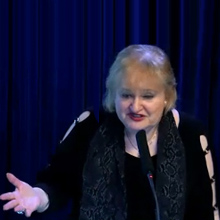Department of Social Work Programs
Message from Department Leadership
The Department of Social Work Programs is committed to providing the highest level of care to the patients and families of our hospital’s Ambulatory Care Center, as well as for the diverse communities we serve through our model programs, including disease-specific initiatives.
Staff Education and Internal Hospital Initiatives
To meet our goals, the Department is committed to enhancing opportunities for staff development, as well as demonstrating leadership related to patient, staff, organizational and community related concerns. Some of these initiatives include: Social Work Staff Development Committee, Journal Club, Complex Case Conference; Departmental Safety Committee; Access to Care Improvement Team; Complex Pediatric Medicaid Managed Care Issues; Employee Engagement, Pain Conference, and Social Work Graduate School Intern Program.
Professional and Community Collaborations
Reflecting our commitment to our community of professional peers, the Department hosts quarterly educational meetings of the Society for Social Work Leaders in Health Care (New York Chapter) - where social work directors, managers, and staff social workers from the greater New York Metropolitan area benefit from presentations from experts in the field - designed to enhance skills and knowledge base for both social workers entering the field, as well as seasoned practitioners.
Our professional social work staff actively participates in federal initiatives such as the Office of Women’s Health Campaign for Lupus Awareness and the National Institute for Arthritis and Musculoskeletal Health and Skin Diseases (NIAMS)’ Task Force on Cultural Diversity. We also present at peer reviewed national professional conferences such as the American College of Rheumatology, Aging in America, and Office of Minority Health’s Leadership Summit, and serve on community and professional councils, to share our knowledge with colleagues to facilitate positive outcomes for patients, families, and communities. We also partner with community-based organizations such as the East Side Council of the Aging, the Arthritis Foundation, the SLE Lupus Foundation, and many other organizations serving the needs of New Yorkers with chronic rheumatologic and musculoskeletal conditions. We welcome the opportunity to explore community collaborations. Please contact us to discuss options.
The Department also plays an integral role in HSS’ Community Service Plan for the New York State Department of Health. For further information about our Charla de Lupus/Lupus Chat® initiatives in the areas of reproductive and nutritional health, LANtern’s ® (Lupus Asian Network) capacity building with organizations concerned with Asian American health care, and VOICES 60+ Senior Advocacy Program’s outreach related to physician-patient communication and home safety, please visit the HSS Community Service Plan.
Roberta Horton, LCSW, ACSW, Assistant Vice President
Mavis Seehaus, MS, LCSW, Director, Ambulatory Care Social Work Services
Jillian Rose, LCSW, MPH, Director, Community Engagement, Diversity, and Research
Social Work Month

Understanding and Addressing Psychological Trauma and Its Impact on Patients and Staff in a Healthcare Setting by S. Lala Straussner, PhD, LCSW: A Presentation in Honor of National Professional Social Work Month 2019

